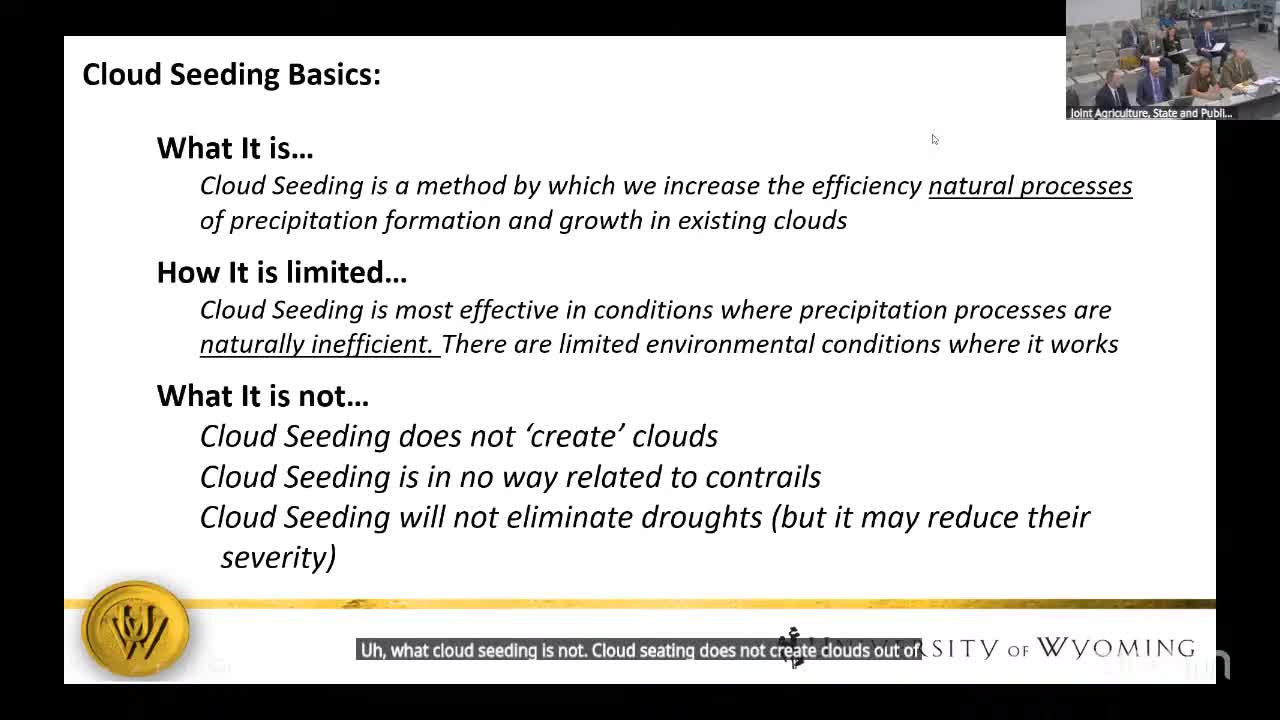
This article was created by AI using a video recording of the meeting. It summarizes the key points discussed, but for full details and context, please refer to the video of the full meeting. Link to Full Meeting
The discussion highlighted that while cloud seeding can mitigate the effects of drought, it cannot eliminate them entirely. "You're not going to take a desert and turn it into a tropical rainforest through cloud seeding," one expert emphasized, underscoring the realistic expectations surrounding this weather modification technique.
Cloud seeding operates primarily through two methods: hygroscopic and glaciogenic seeding, with the latter being the focus of the meeting. Glaciogenic seeding involves introducing particles into clouds to encourage the transformation of liquid water droplets into ice crystals, particularly in wintertime clouds. This process is crucial because ice crystals are more effective in growing to precipitation size than liquid particles.
Experts explained that in clouds with temperatures between 20 and 32 degrees Fahrenheit, liquid water is prevalent, and ice is relatively rare. The introduction of aerosol particles can facilitate the freezing of these supercooled liquid droplets, leading to the growth of ice crystals that eventually fall as precipitation.
The meeting also addressed the specific temperature ranges where cloud seeding is most effective, noting that targeting clouds between 15 and 30 degrees Fahrenheit is ideal for maximizing ice formation. Once the temperature drops significantly, natural ice formation occurs, making additional seeding less effective.
In conclusion, while cloud seeding presents a promising tool for enhancing precipitation, experts cautioned against overestimating its potential, reiterating that it is not a cure-all for drought but rather a method to help alleviate its impacts. The discussions set the stage for further exploration of cloud seeding's role in Wyoming's water resource management strategies.
Converted from Joint Agriculture, State and Public Lands & Water Resources, August 28, 2025 - PM meeting on August 29, 2025
Link to Full Meeting
Comments
View full meeting
This article is based on a recent meeting—watch the full video and explore the complete transcript for deeper insights into the discussion.
View full meeting